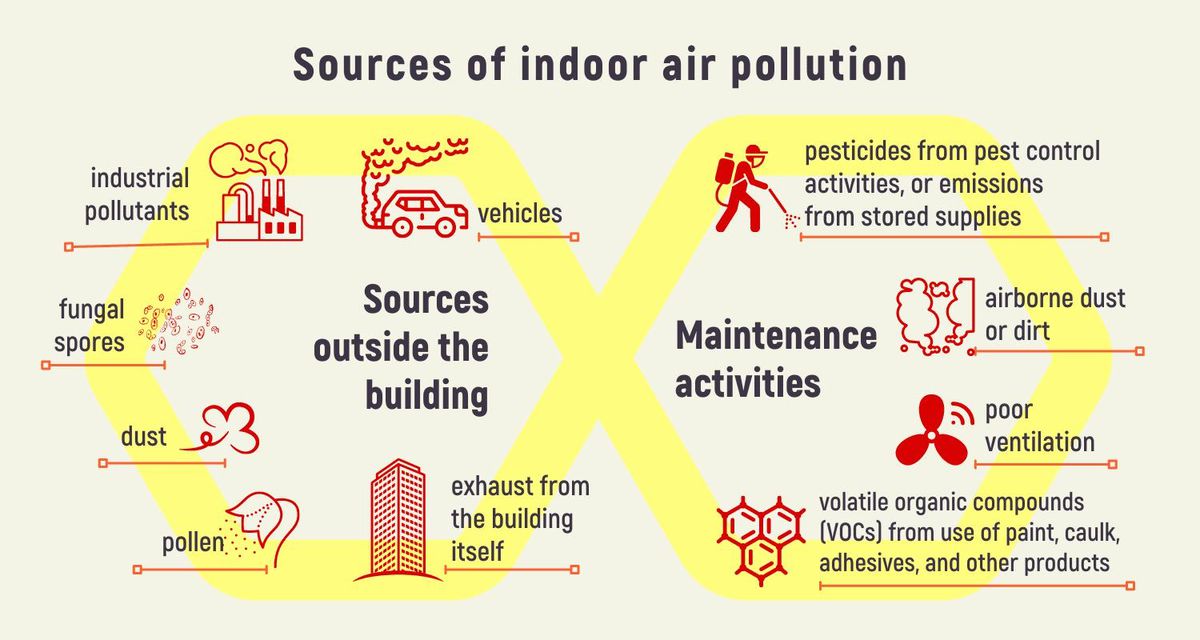Indoor air quality has become a significant concern for many, particularly as people spend increased time inside their homes, offices, and other enclosed environments. Despite the focus on outdoor pollution, experts warn of the hazardous repercussions of indoor air pollution on health.
Recent reports underline the startling reality: indoor air pollution is often more harmful than outdoor pollution. According to research published by the Times of India, experts assert this trend significantly impacts human health, and specific chemicals and pollutants often found indoors can lead to chronic disease.
A study emphasized by experts highlights how common indoor air contaminants, such as volatile organic compounds (VOCs), can stem from various sources, including home furniture, cleaning products, and even mold. These pollutants are notorious for affecting lung function and overall respiratory health.
To deepen our comprehension of the subject, let's explore some of the prevalent pollutants found indoors and their associated health risks.
Firstly, VOCs, which are released from paints, varnishes, and various chemical cleaning products, can lead to symptoms varying from headaches and dizziness to severe respiratory issues and even neurological effects when inhaled over time. The World Health Organization (WHO) has soundly linked prolonged exposure to these compounds with various forms of cancer, some as severe as bladder cancer.
Mold is another significant concern when it appears indoors, often due to excess moisture. Mold can elicit allergic reactions and may lead to serious respiratory issues, particularly for individuals with pre-existing conditions like asthma. Symptoms of mold exposure can include sneezing, coughing, and respiratory troubles.
Radon is another hazardous indoor pollutant often overlooked. This colorless and odorless gas is naturally occurring and can seep from the ground through cracks and crevices. The Environmental Protection Agency (EPA) points out radon as the second leading cause of lung cancer after smoking. Routine home inspections can be necessary to detect radon levels and mitigate its risks effectively.
Aside from these, particulate matter stemming from activities like cooking or burning candles can adversely affect indoor air quality. Studies suggest fine particulate matter can penetrate deep within the lungs, leading to cardiovascular problems and, potentially, premature mortality.
Experts suggest several strategies to combat indoor air pollution. Ensuring adequate ventilation is fundamental. Opening windows, using exhaust fans, and utilizing air purifiers with HEPA filters can significantly reduce indoor air contaminants.
Regular cleaning and maintenance of HVAC systems also play a pivotal role. It’s recommended to routinely replace air filters and clean ducts to prevent the buildup of dust and allergens.
Adding houseplants can also improve indoor air quality, as certain plants absorb harmful chemicals and release oxygen. This natural approach to air purification can provide not just aesthetic benefits but also promote healthier indoor environments.
Public health campaigns continue to stress the importance of awareness surrounding indoor air pollution. The risks associated with these pollutants are significant and affect individuals daily. Reducing exposure could mean noticeable improvements for those affected by respiratory issues or general health problems.
Despite the clear dangers associated with poor indoor air quality, many remain unaware of the threats present within their living spaces. The push for more rigorous regulations on indoor pollutants echoes the need for consistent public education about the sources and effects of indoor air pollution.
With research indicating the dire consequences of prolonged exposure, individuals are encouraged to take proactive steps to improve their indoor air quality. Simple changes can create healthier living environments and reduce the risk of chronic diseases related to indoor pollutants.
The conversation around air quality, both indoors and outdoors, is gaining traction. Ongoing studies and advancements in technology aim to monitor and mitigate these air quality issues, but it begins with awareness. Increased awareness among the public could lead to actionable changes for healthier air.
With air pollution being one of the leading environmental concerns globally, both indoor and outdoor solutions are necessary to tackle health hazards effectively. Each individual has the power to contribute to these efforts, and creating cleaner air starts at home.




